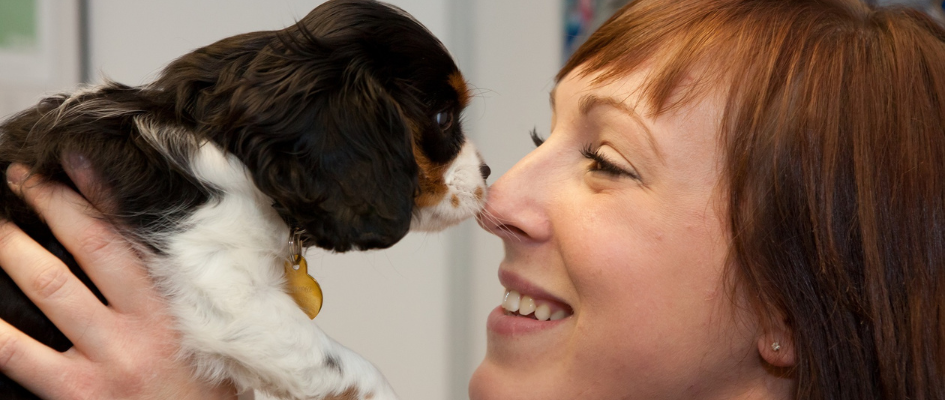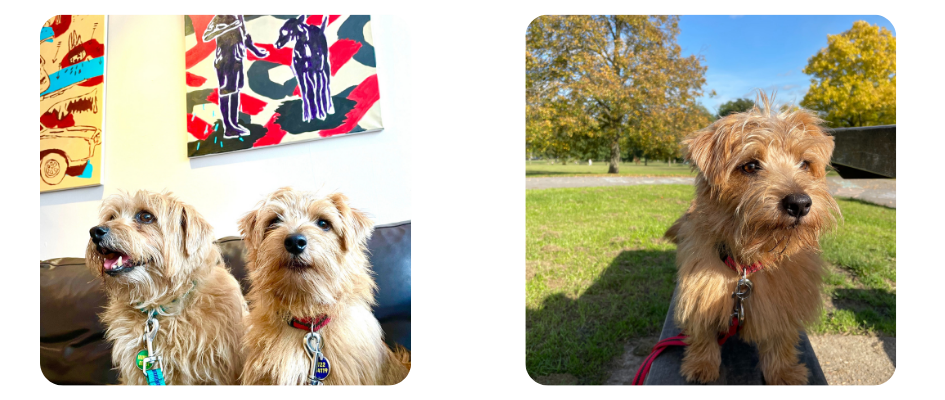Elizabethan collars are a common sight in any veterinary practice and play an important role in your pet’s recovery following any surgical procedure. In this guide, Goddard Veterinary Groups Sam Green will show you how to fit a traditional Elizabethan collar to your pet with the help of Shelby.
Why Do Dogs Need Elizabethan Collars?
These can also be known as a buster collar or cone and are worn by dogs after surgical procedures. The aim of pets wearing these collars is to prevent the dog from licking or biting at the stitches. This is a natural reaction for your pet but can have serious and harmful consequences should they dislodge any stitches before the area has healed.
Preparing for a Collar
It may be a good idea to prepare your home environment for your dog to be cone-wearing. It will likely take your dog a few days to adjust their spatial awareness and it is common for furniture to be knocked by the cone as your dog moves through the house.
It is a good idea to move valuables and fragile objects to protect them and to limit the distress they may cause to your pet should items become broken.
Fitting the Collar
There are a number of types of buster collars available on the market from inflatable collars to fabric, the only stipulation from the collar is that it needs to provide a clear barrier to the surgical area.
Collars also come in a variety of shapes and sizes; your Goddard Vet will ensure they provide you with the best possible fitting collar to make the transition smooth for your pet.
Traditional plastic cones are constricted into shape with the use of a stretchy bandage or fabric material. Once the cone is constructed it can be carefully slid over your pet’s head, treats can be used at this point to keep your pet calm and introduce the use of the cone with a positive experience.
Once around the neck, the collar should be secured with a bow ensuring a fit that leaves some give, our recommended fitting is that two fingers can be fit easily between the collar and your dog’s skin. This leaves ample room for a comfortable experience while it should mean the cone cannot come off. The bandaging or fabric can also be fixed to your dog’s existing collar for extra protection.
Wearing the Collar
Food and Drink
It is important to make considerations around the home for your pet while they are wearing the collar. One of the most important is their ability to access food and drink. Navigating the cone around bowls and to a place they can consume food and water may be challenging and placing their food at different heights or in different bowls/trays or plates may be required.
Positive Reinforcement
Using positivity around the cone and making sure your pet is as comfortable as possible is an important factor in their ability to settle into their time wearing it. The use of treats and positive affection is encouraged to improve the experience of your pet throughout.
Frequently Asked Questions
How Long Does My Pet Need a Buster Collar?
The collar should remain on your dog until the stitches have dissolved or have been taken out by your vet. During this time, it is important to keep your pet’s activity levels to a minimum to aid their recovery and limit the chance of damage to the surgical area.
Should I Take an Elizabethan Collar Off at Night?
Your dog’s collar should remain on for the duration of the time it is required, including at night. This removes the temptation of your dog becoming irritated by the area during the night and biting or licking the wound. The cone shape will not cause any discomfort to your pet’s ability to sleep.




